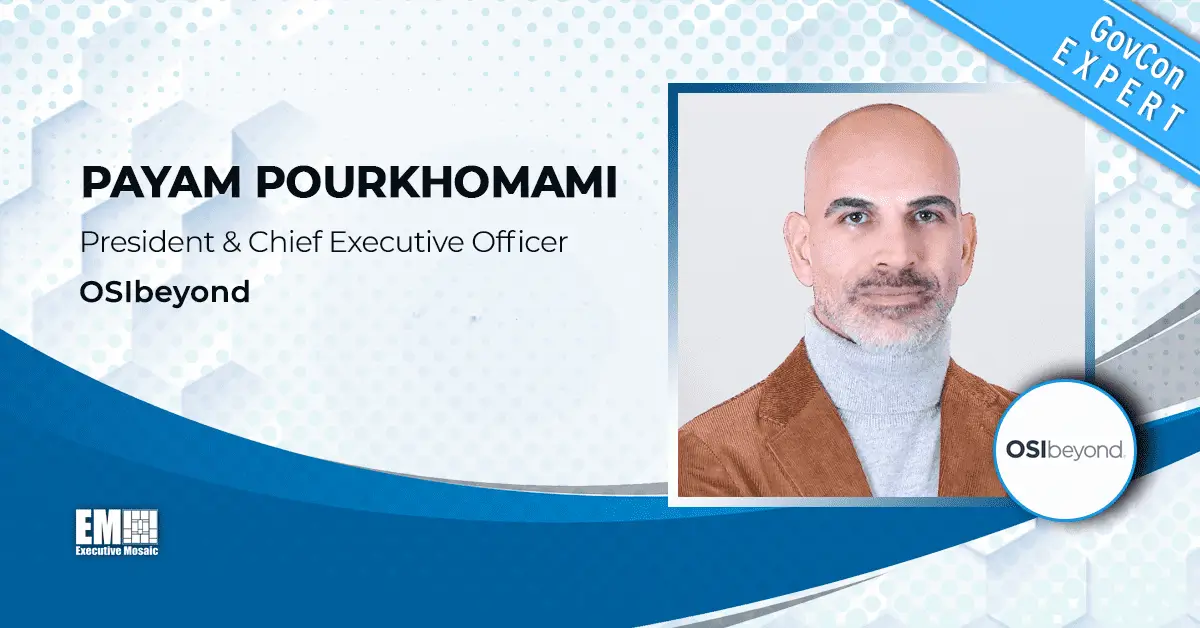 Mick Fox, chief operating officer of Technomile, published his second article as a part of Executive Mosaic’s GovCon Expert program on Thursday.
Mick Fox, chief operating officer of Technomile, published his second article as a part of Executive Mosaic’s GovCon Expert program on Thursday.
Last week, GovCon Expert Mick Fox provided an informative guide into the contract lifecycle management of contract professionals in the federal landscape today in part one of this feature.
On Thursday, Fox used his follow-up article to complete his analysis of the debate for all-in-one versus best-in-class solutions.
He provided a closer look into agreement and risk management as well as drawing some conclusions for the best overall value when evaluating CLM solutions.
After you’ve had the chance to read the two-part GovCon Expert series from Mick Fox, visit GovCon Wire Events to hear his insights on the key trends impacting the government contractors and how to mature the capture process to improve win rate during the platform’s A Blueprint for a Modern, Data-Driven Approach to Capture Management webinar from Aug. 4th.
Check out last week’s A Blueprint for a Modern, Data-Driven Approach to Capture Management Webinar by visiting GovCon Wire Events’ Archive.
You can read Mick Fox’s latest GovCon Expert article below:
A Contracts Professional’s Guide to the All-in-One vs. Best-in-Class Debate – Part 2
By Technomile COO Mick Fox
As a contracts professional, you’ve never had a broader, or more complex, range of technologies available to help you execute your mission. Making sense of the pros and cons of the various Contract Lifecycle Management (CLM) software options available in the market is challenging, particularly when it comes to the “all-in-one” versus “best-in-class” solution debate.
All-in-one solutions are typically either extensions of ERP systems or generalized platforms. Best-in-class solutions are those systems specifically built and continuously developed with one purpose in mind – in this case, contract management. But which solution type best serves the specific and complex needs of companies contracting with the US federal government?
In Part 1 of my article, we began an analysis of this question, focusing on you and your job responsibilities as the rubric through which we’re comparing these two solution categories, and looking specifically at support for your contract administration and compliance management responsibilities.
Now, in my follow-on article, we’ll complete our analysis with a closer look at agreement management and risk management and how well an all-in-one versus best-in-class solution performs. We’ll then draw some conclusions regarding which solution type offers the overall best value for those operating in the federal government contractor world, and highlight the most critical questions to ask when evaluating potential CLM solution vendors.
Let’s jump in!
Agreement Management
Agreement management is a CLM table stake, meaning the ability to generate, modify, compare, and then electronically sign agreements. In addition, the availability of pre-built integrations with leading document management systems should be considered essential, as most companies are driving towards a centralized document/records management repository.
All-in-one solutions will typically integrate with, or offer you a third-party vendor, to provide agreement management capabilities, as the creation of agreements and ability to compare and contrast contractual language in one agreement with your company’s preferred language is beyond the reach, or business model, of all-in-one solutions.
In contrast, best-in-class solutions will natively include core agreement management capabilities. It should be noted that commercial CLM systems offer robust support for contract creation, as this is a primary commercial-to-commercial company activity.
Leading providers of government contracting-focused CLM systems have instead placed a priority on delivering functionality that streamlines agreement management that is industry-specific (e.g., Standard Form 33, NDA, PIA, TA, security questionnaire, etc.).
One additional benefit for best-in-class solutions is the ability to report against the metadata behind the agreements. For example, if your company cares whether the business with whom you are executing an agreement is a woman or veteran-owned, is registered with the government, or has any adverse actions pending, then a best-in-class solution is your only option.
Risk Management
Lastly, the area of risk management. Government contracts are a minefield of risks – limitation of funds, Buy USA, liquidated damages, debarment. All of these risks are buried in the thousands of regulations you deal with daily. All-in-one solutions will allow you to build a risk register and apply it to each contract. If this is sufficient, this may be an option.
However, if you want your system to actively monitor your contracts for these risky clauses, plus any other clauses you deem as a risk, your only option is a best-in-class solution. The ability to train the system to monitor contracts for specific clauses is inherent in best-in-class solutions.
Further, in higher-end best-in-class solutions, the usage of AI to compare current contracts and their risk profiles to other contracts and create an overall risk profile for your company exists. Simply said, all-in-one solutions give you the database to create places to store risks, while best-in-class solutions actively help you manage risks.
Conclusion
As the assessments provided in Part 1 and Part 2 demonstrate, best-in-class solutions are far superior to all-in-one solutions. But, if this is the case, why do so many companies leverage all-in-one solutions for contract lifecycle management?
The answer lies in the “-ilities” described in the introduction. Some CIO organizations don’t understand best practices for integrating systems and therefore want the underlying system to inherently provide the integration. Some CIO organizations want one system for a consistent look/feel and maintainability.
Even though implementation costs can be three to four times the cost of a best-in-class solution, they believe that since they already have knowledge of the all-in-one solution, the total cost of ownership will eventually shift in their favor. All these factors have been aggressively addressed by best-in-class providers. It simply takes discussions with CIOs to provide the evidence.
In conclusion, the trend in contract lifecycle management, specifically for companies that do business with the government, is to use a best-in-class solution. When selecting a best-in-class solution, be sure to investigate and discuss the following:
- What capabilities are on the vendor’s product roadmap? When will they be released (are they alpha or beta) and how will these capabilities help you better do your job?
- How much R&D investment is specifically made in the vendor’s CLM-specific functionality? Is this investment stagnated or diluted across an entire all-in-one suite?
- Is the vendor leveraging technology common to an enterprise of our nature? Will there be unused technology that creates complexity for users and inhibits user adoption and productivity gains?
- How up-to-date is the vendor’s user interface and user experience? What, if any, plans exist to refresh it?
- Does the vendor’s system meet all government security requirements?
- Is the vendor’s system a commercially-oriented CLM being retrofitted for government contracting? Or is it purpose-built for our industry?
Ultimately, each company must select a CLM vendor based on its own unique requirements, but the trend of a best-in-class approach using a solution tailored to the unique and complex needs of government contractors continues to be the strategy of choice for most organizations we encounter.






